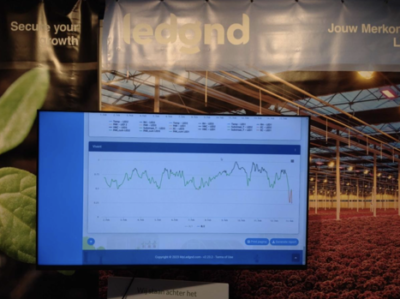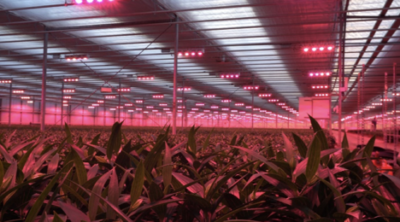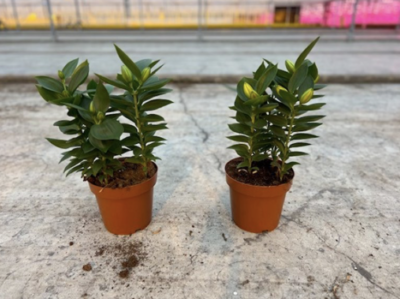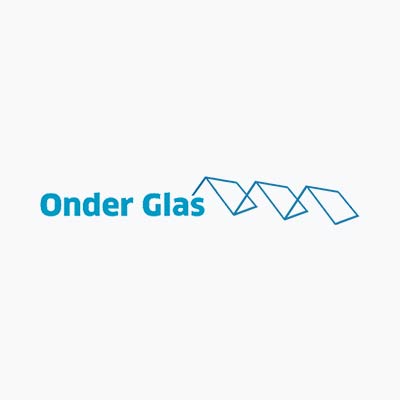
Marcel van der Voort, grower and owner at Van Schie:
“Amazing to see what we can learn from plants if we can read them in real-time”
Rising energy prices continue to concern growers in most countries, especially in Europe and North America. Many growers are interested in using supplemental or full LED lighting because of its energy efficiency compared to conventional lighting. However, the purchase costs and the lack of knowledge about the impact of LED lighting on crops can result in a dilemma. So how can growers ensure that investing in one type of lighting system will provide better results than another? And how can growers know when to apply ancillary light to improve crop yields and quality?

Ledgnd’s stand at HortiContact showing Vivent’s Plant Balance Index via an API
Vivent and Ledgnd team up
Every greenhouse situation is unique, therefore, there isn’t a one-size-fits-all solution. As a result, Ledgnd develops unique light formulas from a brand-independent position to ensure the crop is developing as desired in every greenhouse.
To provide an even more complete solution, Ledgnd has recently teamed up with Vivent. “With the sensor of Vivent, we are able to see real-time crop reactions to changes in lighting, which helps us to develop optimal light recipes guaranteeing better crop performance,” they say.
Lillies
In a recent collaboration, Ledgnd and Vivent assessed the differences in potted lilies grown with and without ancillary LED lighting over a period of 2 months. The results showed clear advantages to using additional lighting.

Potted lilies at a Van Schie facility
Marcel van der Voort, grower and owner at Van Schie, comments: “It is amazing to see what we can learn from plants if we can read them in real-time like Vivent does. We have concluded that 2 hours of extra light did not result in better growth at that specific moment. And we clearly see that the sunrise and sunset have an influence on the plants. We are now assessing the response of the plants on different far-red and brightness treatments. In terms of energy savings, the Vivent data gives us great insight in regards to our screens. We have adjusted our screening strategy and directly save energy because of this.”
Real-time monitoring
Vivent’s biosensors showed that plants lit with LED were more active, responding more strongly to the total amount of light provided and to temperature changes and that development was accelerated. Lilies that received LED Lighting ended up with brighter green foliage and much larger flower buds than lilies that were lit under SON-t, showing clear advantages for the retail channel. In addition, LED-lit plants were slightly more compact.

Compact plants and larger flower buds
Energy Saving
Given high energy costs, growers need to ensure that each extra micromole/Watt of ancillary light applied is worth the investment. Due to the data produced by the Vivent sensor, we were able to optimize the amount and timing of ancillary lighting. We did this by showing when additional lighting provided the most profound effects on the plants. Ramón van de Vrie from Ledgnd commented: “We have integrated the real-time plant biosignals from Vivent into our MyLedgnd dashboard. Growers using our services can see how plants respond to changes in the greenhouse in real-time and adjust their lighting recipes and screening strategy accordingly.”
Published on April 6, 2023.




